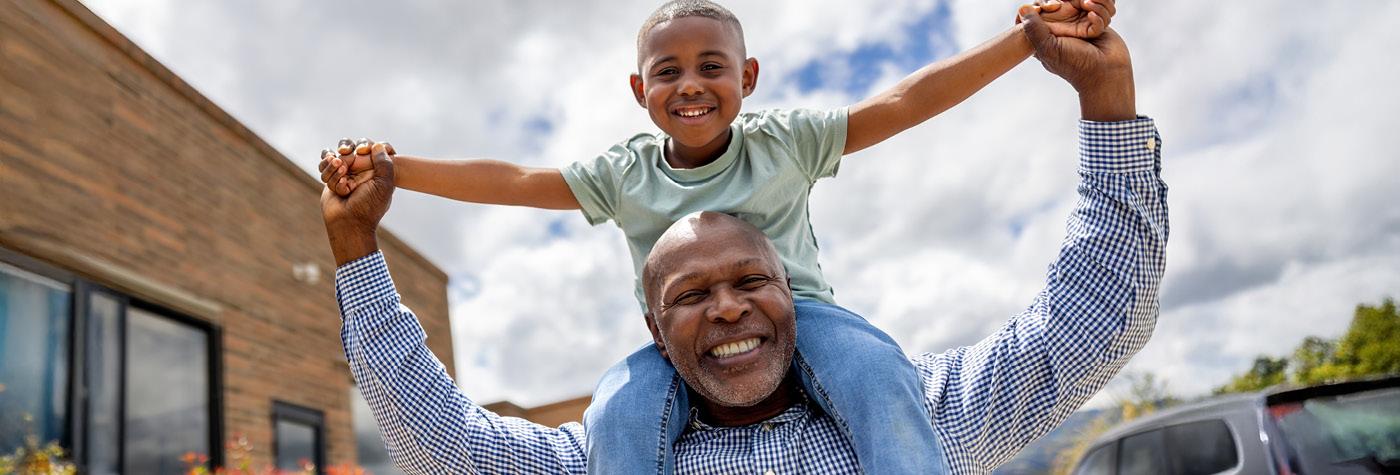Spondylolisthesis is a condition where one of your vertebrae slips out of place. Vertebrae are the bones that make up your spine and protect your delicate spinal cord and nerves, which send signals from your brain to the rest of your body. Spondylolisthesis most often affects the lower back (lumbar spondylolisthesis). But it can happen in any part of the spine, including your neck (cervical spondylolisthesis).
This condition may affect adolescents, especially teen athletes, and older adults. Different problems in the spine, including aging and stress fractures, cause different types of spondylolistheses.
We use a grading system to assess how severe spondylolisthesis is. This grading system is based on how far the vertebra has slipped out of place in the spinal canal:
- Grade I: Up to 25% slippage
- Grade II: 26% to 50% slippage
- Grade III: 51% to 75% slippage
- Grade IV: 76% to 100% slippage
Grades I and II are low-grade spondylolisthesis. Grades III and IV are high-grade and are more likely to require surgery. The more your vertebra has moved out of place, the more likely you are to have pain and other symptoms. These symptoms occur as the bone, ligament and disk press on either the spinal cord or nerves.
Finding the variety of specialists needed for spine care can be complicated. The UK HealthCare Comprehensive Spine Center makes it simple by bringing together a team of all the specialists you may need. Within one program, you have access to all our specialties:
- Physical medicine and rehabilitation
- Interventional pain medicine
- Orthopaedic surgery
- Neurosurgery
- Physical and occupational therapy
Spondylolisthesis often has no symptoms. The worse it is, the more likely you are to feel symptoms such as:
- Lower back pain
- Neck pain
- Numbness or tingling in your arms or legs
- Pain in your arms or legs
- Stiffness in your spine
- Weakness in one or both arms or legs, especially with physical activity
If you have pain caused by lumbar spondylolisthesis, it is likely to feel worse when you twist or move and better when you lie flat. Severe spondylolisthesis can cause problems with bladder and bowel function, but this symptom is rare.
The types of spondylolistheses have different causes.
- Degenerative spondylolisthesis is caused by aging. Wear and tear on the spine lead to instability that allows vertebrae to slip out of place.
- Isthmic spondylolisthesis (also called spondylolytic spondylolisthesis) is caused by a stress fracture in the vertebra. This fracture often happens in the lumbar spine. The damage may occur in adolescence and go unnoticed until degenerative changes in adulthood create the vertebra slip.
- Dysplastic spondylolisthesis is present at birth. It causes misalignment of the part of the vertebrae called facet joints.
- Pathologic spondylolisthesis is caused by medical conditions such as infection or connective tissue disorders.
- Traumatic spondylolisthesis is usually caused by an injury to the spinal column, often because of a fall.
Risk factors for developing spondylolisthesis include:
- Being an adolescent or being over 50
- Being female
- Having an immediate family history of spondylolisthesis, scoliosis or spina bifida occulta
- Obesity
- Playing sports or participating in activities that can overextend the back muscles, such as ballet, football, golf, gymnastics, volleyball, weightlifting and wrestling
- Around 5% of people in the U.S. experience spondylolisthesis.
Your journey to better spine health begins at home. Before you visit UK HealthCare for spine pain, we review your medical records. We may contact you with follow-up questions. We then discuss your case as a team. Based on these conversations, we determine which specialists will best meet your needs.
Next, we schedule your appointment. To provide you with the best care possible, you may need to meet with multiple providers. This helps us meet all your care needs in a timely manner.
During your first visit, we answer questions and provide information to help you better understand your condition. We also work to find out what is causing your symptoms and develop a treatment plan.
In most cases, we start with non-surgical treatment, such as lifestyle changes and physical therapy. Spine issues that don’t improve with this approach may require other treatment, including pain management and surgical intervention.
When coming to your first appointment, plan to do the following:
- Arrive early. You may need to fill out paperwork when you arrive. Getting to your appointment early gives you time to complete paperwork without feeling rushed.
- Bring a current list of medicines or supplements you take. You should also list any surgeries you’ve had, symptoms you’ve experienced and other past health issues.
- Dress comfortably. Working toward a diagnosis takes time. Comfortable clothes help you stay relaxed and attentive throughout your visit. They also make it easier to perform your physical exam.
- Eat and drink as directed. You may need to have imaging or other tests during your first visit. If you need to adjust your eating, drinking or medicines before a test, a team member will call to explain what you need to do leading up to your visit.
- Have your insurance information on hand. UK HealthCare accepts most insurers, and financial assistance is available.
- Bring a family member or friend with you. This person can help take notes and ask questions you may not think of asking.

